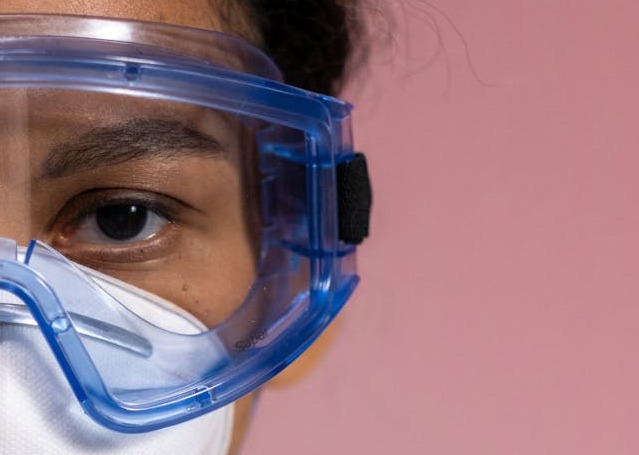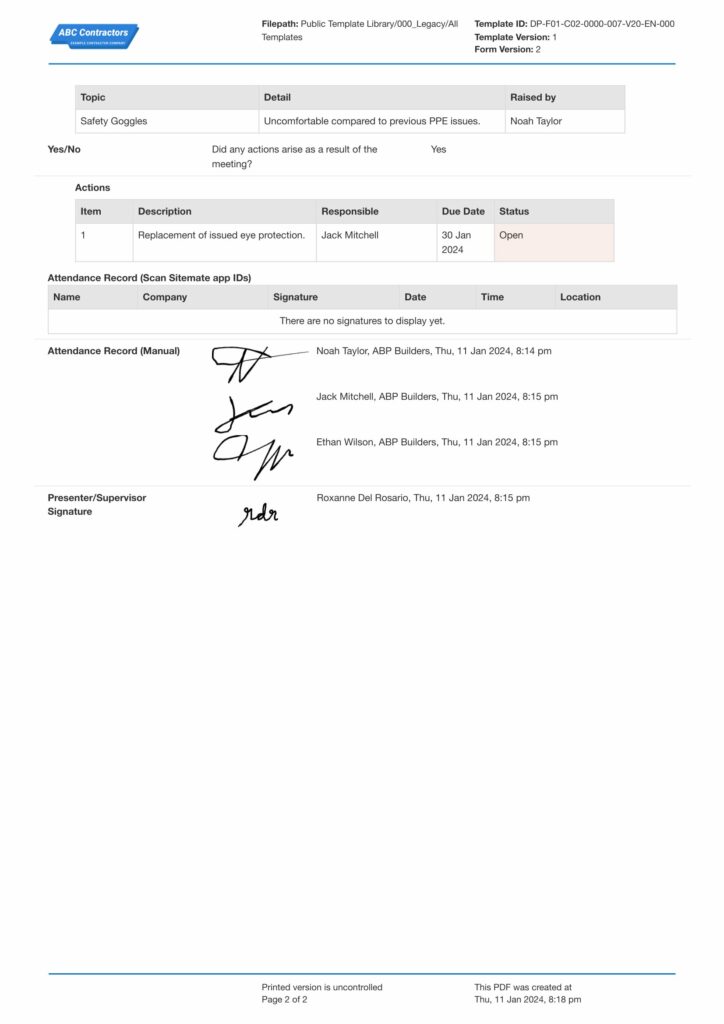Dashpivot Article – ANSI Eye Protection
ANSI Eye Protection
In this article, we’ll take a quick look at what ANSI means, how it has provided strict rules in safety glasses, a simple explanation of the Z87.1 safety standard, the different types of ANSI-approved eyewear, and how digital solutions can enhance safety and comply with ANSI standards.

What Is ANSI Eye Protection?
Eye-related injuries in the workplace unfortunately happen more frequently than most people would expect. Injuries could be minor like having dust in your eyes, eye strain, or mild chemical reactions; moderate ones like bruising around your eye or corneal abrasions, and; the severe ones like permanent blindness and eye infections. It doesn’t matter if it’s minor, moderate, or severe – if they’re not prevented and addressed before they happen, workers would likely have long-term vision problems, serious health risks, and a loss of productivity for the business.
Most of these eye injuries can actually be prevented by wearing the proper safety glasses or eyewear, approved by the American National Standards Institute (ANSI). In fact, according to the stats provided by the Occupational Safety and Health Administration (OSHA), and backed up with data from the National Institute of Occupational Safety and Health (NIOSH), 90% of eye injuries could be avoided if only you wear the proper eyewear. The rest of the 10% are unforeseen accidents that less likely to happen even with safety glasses on, like, for example, excessive or brutal force to the eyes or rare hazards.
Read this OSHA Eye Protection: How to Comply with Requirements article to know more about what OSHA has to say about eye protection.
The ANSI has provided clear requirements that determine whether an eyewear is good and safe to use, and these are outlined to improve the effectiveness of safety glasses. The conditions make sure that your safety glasses are fully equipped, built, and fit for the right hazard associated to the job, and to put in a nutshell, for the eyewear or safety glasses to be approved in this standard, it must pass multiple tests that test the impact resistance, coverage, lens clarity, and durability.
Overall, as long as rules are followed, workers are provided the proper eyewear for specific jobs, and the employers ensure total and complete safety in the workplace, then the risk of eye injuries could be controlled and significantly reduced.
ANSI Z87.1 Safety Standard for Eye Protection
The ANSI Z87.1-2020 (the most recent version of the standard for using safety glasses, safety goggles, etc. subsequent after its 2015 edition) is a detailed document created by ANSI that gives the rules, how to test, and the requirements needed for all eye and face protection. Here’s a rundown of the important items you need to know in ANSI Z87.1-2020:
Goals and who needs ANSI Eye Protection: In the first part of the document, ANSI lays out the goal of the standard and indicates that the standard is applicable to all occupational and educational settings. Any job or task with eye-related hazards, need to wear ANSI-approved eye gear. Later in this article are some industries that commonly involve hazards resulting in eye injuries, like debris, chemicals, bright lights, etc. To read more about how and why we should care for our eyes during jobs, read this Eye Protection Safety article.
How to read ANSI markings: For products in compliance with ANSI/ISEA Z87.1-2020, the standard marking is Z87. For more details about the ANSI markings, you can refer to Table 3 of the same document.
How to pick the right safety glasses: Before starting on a job that requires eyewear, you need to list the hazards associated with the job. After having been able to determine the hazards, you can match those with the recommended eyewear. Like for example, if you’re dealing with heat and flames, then it’s only right to choose eyewear that is specifically intended to be heat-resistant, and also include face shields. Similarly, this helps companies determine which eyewear to purchase for specific job hazards. In a way, this will encourage personnel, companies, and workers to conduct a hazard assessment so they can know which gears are needed for the job. Here’s more information regarding this section, which can be also found in this article Eye Protection PPE: Understanding the Different Types.
How to care for your safety glasses: It’s pretty common sense to care for PPEs and gears when doing before and after a job, however, in high-risk work environments, sometimes it’s hard for employees to remember these important things, so clear guidelines ensure consistency and these practices still need to be laid out in standards. ANSI provides the general guidelines on how to care and maintain of your safety classes, to store them properly, to inspect them if there are damages or cracks, and to train workers in doing all of those.
To read more about the safety standards, see or get the standards from ANSI/ISEA Z87.1: Current Standard for Safety Glasses.
Jobs and tasks that require ANSI-approved eye protection
As mentioned earlier, the ANSI Z87.1-2020 standard is applicable to all settings, for as long as the job or task is associated with an eye-related hazard, then workers are required to use ANSI-approved eyewear. There are just some jobs that require additional attention and focus, plus a proper hazard assessment, like the construction industry.
In the construction industry, you’re always bound to see debris and materials all over, and you’re using power tools and heavy machinery, which are always going to be associated with common, or even maybe unique, hazards. When you’re using heavy machinery, for example, a chainsaw, debris will be all over the place and without the proper gears, your eyes are at risk for impact from those debris. See this article specifically addressing eye safety when using chainsaws Chainsaw Eye Protection: An Essential Guide to Safety and Use and this general article intended for construction workers Eye Protection Construction: Keep an eye on construction PPE.
Safety documentation for eye protection and workplace safety
Here’s a fine example of how digital tools can streamline eye protection and workplace safety. Like this Eye Protection Toolbox Talk, it’s set so that when you’re doing your toolbox talks, you’re able to address what needs to be addressed. Having a proper structure that perfectly fits the company and safety policies will be able to help you and your team plan on the talking points on PPE eye protection. Furthermore, if you need to switch things up, you can easily spin up the talk variations in your TBT.
Additionally, you use the very same document to track the attendance by using a digital ID with electronic sign-offs. You can very easily retrieve your previous toolbox talks and create analytics on the common hazards and safety discussions across your history of talks.

Use this Eye Protection safety talk structure for free
Ways to use technology for ANSI compliance
With eye safety being a top priority, it might be difficult to maintain compliance with regulatory bodies and make multiple employees involved across different projects to follow the rules. Even with the standards set in place, companies and employers still need to intervene and make sure they’re followed at all times.
When you use the right technology, you can enhance how you keep track if safety practices are being followed, and you don’t have to worry about inspectors checking in whenever anyone’s missing appropriate PPE. You can make use of digital checklists that you bring around with you via your mobile device or tablet when you’re about to start on a job involving eye-related hazards.
What’s more, since it’s digital, you can pre-build the contents that fit perfectly on the type of eyewear protection you’re using for a specific job or task. This cloud-based system makes it easier to track inventory and make sure that all safety gears are up-to-date and fully inspected.
Just think about how you can leverage digital solutions, with not just enhancing safety and protection in the workplace but simplifying meeting ANSI compliance.
Use digital tools that enhance eye safety and protection in your workplace, where you can streamline, edit, and adapt the structures of your talks and other documents on-the-go, anytime, anywhere.

PPE Inspection Checklist
Make your PPE inspection checklists easy to complete directly on site, and then download, print or share the results.

Safety Toolbox Talk
This toolbox talk template is quick and easy to complete and signoff on site, and keeps all of your toolbox talks neatly organised and professional.

PPE Request Form
Automate PPE requests and approvals with this smart PPE request form to save everyone time and ensure no PPE request ever gets missed or forgotten.

